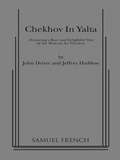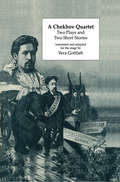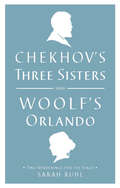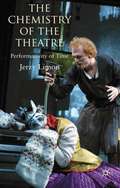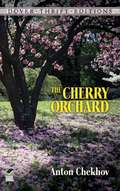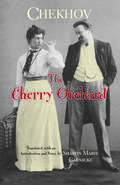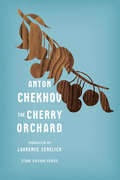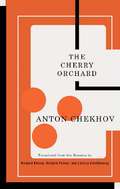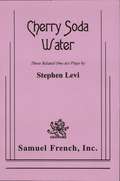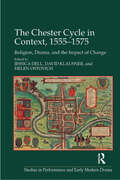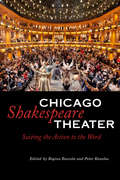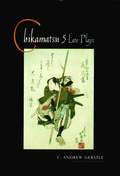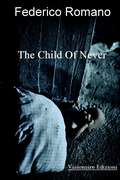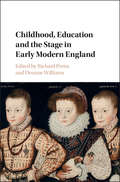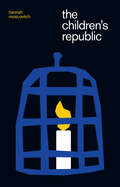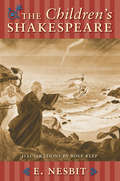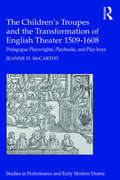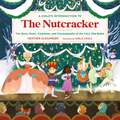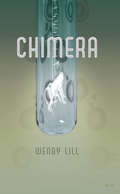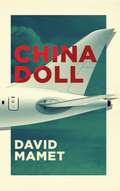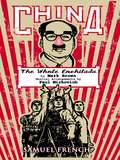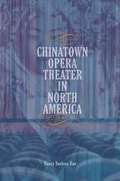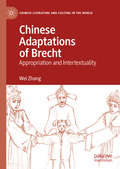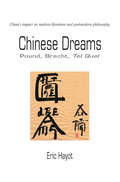- Table View
- List View
Chekhov in Yalta
by John DriverComedy / 7m, 4f / 1 Set Confined in is villa at Yalta by illness in April of 1900, Chekhov receives a delightful visit by the Moscow Art Theatre. They have embarked on a provincial tour with the express purpose of persuading Chekhov to give them his latest play. Noteworthy characters include Stanislavski, Valdmir Nemirovich Danchenko, Gorky, Ivan Bunin and actress Olga Knipper who Chekhov, a confirmed bachelor, contemplates marrying even as he acknowledges his advancing consumption. The play is criss crossed with amorous triangles, battles of ego, high spirits and melancholic languor reminiscent of Chekhov's work. Winner of several prestigious awards including a Los Angeles Drama Critics Award for Distinguished Playwrighting and an American Theatre Critics Citation. "A truly Chekhovian comedy filled with wit, style, and passion." - L.A. Star News
A Chekhov Quartet
by Vera GottliebFirst Published in 1996. Translated from Chekhov's short plays and adapted from his stories by Vera Gottlieb, this collection consists of four one-act plays. Short though they are, each contains a whole range of dramatic possibilities and presented together the plays form a coherent programme, offering performers and audiences an intimate theatrical experience ranging from high comedy to sombre analysis. Both student and professional actors will find an opportunity to display all their powers of invention, characterisation, timing, audience control, concentration and finesse. A Chekhov Quartet has been performed in London, Moscow and at the 1990 Chekhov Festival in Yalta
Chekhov's Three Sisters and Woolf's Orlando
by Virginia Woolf Sarah Ruhl Anton Chekhov"[Ruhl's Orlando] captures both the intellectual spirit and the literary brilliance of Woolf's work. . . . Ruhl writes with the imaginative sweep that allows Woolf's poetry to soar."--Variety "Sarah Ruhl's smart new translation [of Three Sisters] feels just right to contemporary American ears--lean, colloquial, and conversational for us and true to Chekhov's original work."--The Cincinnati Enquirer In her stage adaptation of Virginia Woolf's gender-bending, period-hopping novel, award-winning playwright Sarah Ruhl "is her usual unfailingly elegant, unbeatably witty self, cleverly braiding her own brand-name wit with Woolf's" (New York )magazine. Preserving Woolf's vital ideas and lyrical tone, Ruhl brings to the stage the life of an Elizabethan nobleman who's magically transformed into an immortal woman. In her fresh translation of Three Sisters, the Anton Chekhov classic of ennui and frustration, Ruhl employs her signature lyricism and elegant understanding of intimacy to reveal the discontent felt by fretful Olga, unhappy Masha, and idealistic Irina as they long to leave rural Russia for the ever-alluring Moscow. Sarah Ruhl's other plays include the Pulitzer Prize finalists In the Next Room (or the vibrator play) and The Clean House, as well as Passion Play, Dean Man's Cell Phone, Demeter in the City, Eurydice, Melancholy Play, and Late: a cowboy song. She is the recipient of a Whiting Writers' Award, a PEN/Laura Pels Award, and a MacArthur Fellowship. Her plays have premiered on Broadway, Off-Broadway, and in many theaters around the world.
The Chemistry of the Theatre
by Jerzy LimonThis innovative, theoretical work focuses on temporal issues in theatre and the 'chemistry' of theatre - the ways in which a variety of factors in performance combine to make up what we call 'theatre'. Discussing a range of canonical plays, from Shakespeare to Beckett, the book makes a unique contribution to theatre and performance studies.
The Cherry Orchard
by Anton ChekhovThe Cherry Orchard was first produced by the Moscow Art Theatre on Chekhov's last birthday, January 17, 1904. Since that time it has become one of the most critically admired and performed plays in the Western world, a high comedy whose principal theme, the passing of the old semifeudal order, is symbolized in the sale of the cherry orchard owned by Madame Ranevsky.The play also functions as a magnificent showcase for Chekhov's acute observations of his characters' foibles and for quizzical ruminations on the approaching dissolution of the world of the Russian aristocracy and life as it was lived on their great country estates. While the subject and the characters of the work are, in a sense, timeless, the dramatic technique of the play was a Chekhovian innovation. In this and other plays he developed the concept of "indirect action," in which the dramatic action takes place off stage and the significance of the play revolves around the reactions of the characters to those unseen events.Reprinted from a standard edition, this inexpensive well-made volume invites any lover of theater or great literature to enter the world of Madame Ranevsky, Anya, Gayef, Lopakhin, Firs, and the other memorable characters whose hopes, fears, loves, and general humanity are so brilliantly depicted in this landmark of world drama.
The Cherry Orchard
by Anton Chekhov Sharon Marie CarnickeDrawn from Sharon Marie Carnicke's volume of Chekhov, Four Plays and Three Jokes (Hackett), this edition of The Cherry Orchard features Carnicke's groundbreaking translation of a play that has been called Chekhov's ultimate theatrical coup d'etat.** Donald Rayfield, The Cherry Orchard: Catastrophe and Comedy
The Cherry Orchard
by Anton Chekhov Laurence Senelick<P>Anton Chekhov is a unique force in modern drama, his works cherished for their brilliant wit and insight into the human condition. <P>In this stunning new translation of one of Chekhov's most popular and beloved plays, Laurence Senelick presents a fresh perspective on the master playwright and his groundbreaking dramas. <P>He brings this timeless trial of art and love to life as memorable characters have clashing desires and lose balance in the shifting eruptions of society and a modernizing Russia. <P>Supplementing the play is an account of Chekhov's life; a note on the translation; an introduction to the work; and variant lines, often removed due to government censorship, which illuminate the context in which they were written. <P>This edition is the perfect guide to enriching our understanding of this great dramatist or to staging a production.
The Cherry Orchard
by Larissa Volokhonsky Richard Nelson Anton Chekhov Richard Pevear"Pevear and Volokhonsky are at once scrupulous translators and vivid stylists of English."--The New YorkerThere have always been two versions of Chekhov's heartrending and humorous masterwork: the one with which we are all familiar, staged by Konstatine Stanislavski at the Moscow Art Theatre in 1904, and the one Chekhov had originally envisioned. Now, for the first time, both are available and published here in a single volume in translations by the renowned playwright Richard Nelson and Richard Peavar and Larissa Volokhonsky, the foremost contemporary translators of classic Russian literature. Shedding new light on this most revered play, the translators reconstructed the script Chekhov first submitted and all of the changes he made prior to rehearsal. The result is a major event in the publishing of Chekhov's canon.Richard Nelson's many plays include Rodney's Wife, Goodnight Children Everywhere, Drama Desk-nominated Franny's Way and Some Americans Abroad, Tony Award-nominated Two Shakespearean Actors and James Joyce's The Dead (with Shaun Davey), for which he won a Tony Award for Best Book of a Musical, and the critically acclaimed, searing play cycle, The Apple Family Plays.Richard Pevear and Larissa Volokhonsky have produced acclaimed translations of Leo Tolstoy, Fyodor Dostoevsky, Nikolai Gogol, Anton Chekhov, and Mikhail Bulgakov. Their translations of The Brothers Karamazov and Anna Karenina won the 1991 and 2002 PEN/Book-of-the-Month Club Translation Prizes. Pevvear, a native of Boston, and Volokhonsjky, of St. Petersburg, are married to each other and live in Paris.
Cherry Soda Water
by Stephen LeviOne act dramas / 3m, 3f / Exterior / On the same night in a northern California coastal town, two families are challenged as reality crashes into fantasy in three related one act plays. In tone, Cherry and Little Banjo, Red Roses for My Lady and The Gulf of Crimson vary from lost innocence to shattered dreams to revived love. The trilogy enjoyed a long run in Los Angeles and was awarded Distinguished Achievement from Wichita State University. Also see individual titles.
The Chester Cycle in Context, 1555-1575: Religion, Drama, and the Impact of Change (Studies in Performance and Early Modern Drama)
by Jessica Dell David KlausnerThe Chester Cycle in Context, 1555-1575 considers the implications of recent archival research which has profoundly changed our view of the continuation of performances of Chester's civic biblical play cycle into the reign of Elizabeth I. Scholars now view the decline and ultimate abandonment of civic religious drama as the result of a complex network of local pressures, heavily dependent upon individual civic and ecclesiastical authorities, rather than a result of a nation-wide policy of suppression, as had previously been assumed.
Chicago Shakespeare Theater: Suiting the Action to the Word
by Regina BuccolaThe Chicago Shakespeare Theater is widely known for vibrant productions that reflect the Bard's genius for intricate storytelling, musicality of language, and depth of feeling for the human condition. Affectionately known to natives of the Windy City as "Chicago Shakes," this vanguard of Chicago's rich theatrical tradition celebrates its silver anniversary with this bracing collection of original essays by world-renowned scholars, directors, actors, and critics. Chicago Shakespeare Theater unveils the artistic visions and decisions that helped shape this venerable institution and examines the theater's international reputation for staging such remarkable and provocative performances. The volume brings together works by such heralded drama critics as Terry Teachout, Jonathan Abarbanel, and Michael Billington; theater industry giants like Michael Bogdanov, Edward Hall, and Simon Callow; interviews with the Chicago Shakespeare Theater's own Artistic Director Barbara Gaines and Executive Director Criss Henderson; and essays by such noted figures in academe as Clark Hulse, Wendy Wall, and Michael Shapiro.
Chikamatsu: Five Late Plays (Translations from the Asian Classics #No. 116)
by ChikamatsuChikamatsu Monzaemon (1653-1725), often referred to as "Japan's Shakespeare" and a "god of writers," was arguably the most famous playwright in Japanese history and wrote more than 100 plays for the kabuki and bunraku theaters. Today, the plays of this major literary figure are performed on kabuki and bunraku stages as well as in the modern theater, and forty-nine films of his plays have been made, thirty-one of them from the silent era.Translations of Chikamatsu's plays are available, but we have few examples of his late work, in which he increasingly incorporated stylistic elements of his shorter, contemporary dramas into his longer period pieces. Translator C. Andrew Gerstle argues that in these mature history plays, Chikamatsu depicted the tension between the private and public spheres of society by combining the rich character development of his contemporary pieces with the larger political themes of his period pieces. In this volume Gerstle translates five plays—four histories and one contemporary piece—never before available in English that complement other collections of Chikamatsu's work, revealing new dimensions to the work of this great Japanese playwright and artist.
The Child of Never
by Federico RomanoThe great journey that Frederik Jonson will make to the heavenly kingdom will open the way for him on the origin and truth of his life. Through a varied gallery of characters - human fauna of defenceless victims or executioners, wicked murderers or innocents, men devoted to excesses and perditions or innocent unconscious people - an extraordinary epiphany of greatness will take place: the revelation of Frederik's destiny and the eschatological passage from "child of never" to man from generous existence to heroism.
Childhood, Education and the Stage in Early Modern England
by Richard Preiss Deanne WilliamsWhat did childhood mean in early modern England? To answer this question, this book examines two key contemporary institutions: the school and the stage. The rise of grammar schools and universities, and of the professional stage featuring boy actors, reflect the culture's massive investment in children. In this collection, an international group of well-respected scholars examines how the representation of children by major playwrights and poets reflected the period's educational and cultural values. This book contains chapters that range from Shakespeare and Ben Jonson to the contemporary plays of Tom Stoppard, and that explore childhood in relation to classical humanism, medicine, art, and psychology, revealing how early modern performance and educational practices produced attitudes to childhood that still resonate to this day.
The Children's Republic
by Hannah MoscovitchConfined within the walls of the Warsaw Ghetto, Dr. Janusz Korczak struggles to protect the children at his orphanage from the horrors of the Second World War. There is not enough food or pairs of eyes to keep watch over them. Between a troublemaking thief, an abandoned girl, a malnourished boy, and a violin prodigy, Janusz has his hands full, but together they fight for beauty and hope in a world crumbling around them. Based on the WWII advocacy work of Dr. Janusz Korczak, The Children’s Republic is a reminder of the hope that can still be found in a world devoid of freedom and the necessities of life.
The Children's Shakespeare
by Edith NesbitThe acclaimed children&’s author shares vibrant retellings of the Bard&’s timeless tales in this classic, illustrated collection for young readers. As both a writer and a mother, E. Nesbit wanted an engaging way to share the great works of Shakespeare with children. In The Children&’s Shakespeare, she adapted eleven of his plays—including Hamlet, Twelfth Night, A Midsummer Night&’s Dream, and others—into accessible stories that creatively capture all the essential elements. The Children&’s Shakespeare offers an ideal introduction to these works, simply told yet preserving their wit, humor, emotion, and drama. In E. Nesbit's gifted hands, these stories emerge with all the charm and grace of the very best fairy tales. Written in modern English and each no more than ten pages in length, the eleven plays featured in this volume afford children the opportunity to discover the magic of Shakespeare for themselves
The Children's Troupes and the Transformation of English Theater 1509-1608: Pedagogue, Playwrights, Playbooks, and Play-boys (Studies in Performance and Early Modern Drama)
by Jeanne McCarthyThe Children’s Troupes and the Transformation of English Theater 1509–1608 uncovers the role of the children’s companies in transforming perceptions of authorship and publishing, performance, playing spaces, patronage, actor training, and gender politics in the sixteenth century. Jeanne McCarthy challenges entrenched narratives about popular playing in an era of revolutionary changes, revealing the importance of the children’s company tradition’s connection with many early plays, as well as to the spread of literacy, classicism, and literate ideals of drama, plot, textual fidelity, characterization, and acting in a still largely oral popular culture. By addressing developments from the hyper-literate school tradition, and integrating discussion of the children’s troupes into the critical conversation around popular playing practices, McCarthy offers a nuanced account of the play-centered, literary performance tradition that came to define professional theater in this period. Highlighting the significant role of the children’s company tradition in sixteenth-century performance culture, this volume offers a bold new narrative of the emergence of the London theater.
A Child's Introduction to the Nutcracker: The Story, Music, Costumes, and Choreography of the Fairy Tale Ballet (A Child's Introduction Series)
by Heather AlexanderBallet enthusiasts of all ages will delight in the magical story of The Nutcracker and the magnificent ballet it inspired in this enchanted book packed with colorful illustrations, fun facts, history, music, and the love of dance. Whether The Nutcracker is your first ballet experience or you&’re already a master dancer, everything you love and want to know about this special, sugar-spun, snow-dusted ballet can be found in these delightful pages. Follow The Nutcracker as it makes its way from page to stage to become the world&’s most popular holiday ballet. Learn all about the dazzling steps, spins, and jumps choreographed by Petipa, Ivanov, and Balanchine, and meet the famed composer Tchaikovsky. Special sections highlight some of the most famous dancers and companies that have brought the performance and the magic of this ballet to life.Packed with charming illustrations showcasing the beautiful costumes and lavish sets, plus removable poster for you to color, A Child&’s Introduction to the Nutcracker lets you to enjoy this magical ballet all year round!
Chimera
by Wendy LillThis compelling drama explores the ethical controversy and public policy surrounding reproductive technologies. Wendy Lill has lived almost all the roles the play dramatizes: NDP critic for both culture and persons with disabilities, she came to politics after a career in community health care and as a reporter for the Canadian Broadcasting Corporation. Cast of 2 women and 5 men.
China Doll
by David Mamet"The finest American author of his generation."--Sunday MailThis complex new work from celebrated playwright David Mamet revolves around a wealthy man, his young fiancée, and an airplane. The man has just bought a new plane as a wedding present for the girl. He intends to go into semiretirement and enjoy himself. While in the process of leaving his office, and giving last minute instructions to his young assistant, he takes one final phone call.The new, widely anticipated play premieres on Broadway this fall, starring Tony and Academy Award-winning actor Al Pacino, for whom the play was written. Pacino described the role of billionaire Mickey Ross as "one of the most daunting and challenging roles I've been given to explore in the theater" and declared, "it blew me away."David Mamet is an American playwright, director, and screenwriter whose most notable works include Glengarry Glen Ross (Pulitzer Prize for Drama), American Buffalo, Speed-the-Plow, Oleanna, November, Race, and The Anarchist. Besides the film adaptations of his plays, his major screenwriting credits include The Postman Always Rings Twice, The Verdict, Rising Sun, Wag the Dog, and Hannibal. Over the course of his prolific career, Mamet has earned Tony Award nominations, Academy Award nominations, Drama Desk Awards, and "Screenwriter of the Year" from the London Critics Circle Film Awards.
China Doll (TCG Edition)
by David Mamet"The finest American author of his generation."--Sunday MailThis complex new work from celebrated playwright David Mamet revolves around a wealthy man, his young fiancée, and an airplane. The man has just bought a new plane as a wedding present for the girl. He intends to go into semiretirement and enjoy himself. While in the process of leaving his office, and giving last minute instructions to his young assistant, he takes one final phone call.The new, widely anticipated play premieres on Broadway this fall, starring Tony and Academy Award-winning actor Al Pacino, for whom the play was written. Pacino described the role of billionaire Mickey Ross as "one of the most daunting and challenging roles I've been given to explore in the theater" and declared, "it blew me away."David Mamet is an American playwright, director, and screenwriter whose most notable works include Glengarry Glen Ross (Pulitzer Prize for Drama), American Buffalo, Speed-the-Plow, Oleanna, November, Race, and The Anarchist. Besides the film adaptations of his plays, his major screenwriting credits include The Postman Always Rings Twice, The Verdict, Rising Sun, Wag the Dog, and Hannibal. Over the course of his prolific career, Mamet has earned Tony Award nominations, Academy Award nominations, Drama Desk Awards, and "Screenwriter of the Year" from the London Critics Circle Film Awards.
China - The Whole Enchilada
by Mark Brown3m / Musical Comedy / A hilarious new musical, China - The Whole Enchilada is three men singing, dancing, and irreverently marching their way through four thousand years of Chinese history- in less than two hours with an intermission. The show dares to tackle racism, human rights, genocide, and the birth of the fortune cookie. / Selected participant of the 2008 New York International Fringe Festival. / "Sublimely silly! I found myself grinning, if not outright laughing through most of the goofy shenanigans," - Houston Press
Chinatown Opera Theater in North America
by Nancy Yunhwa RaoThe Chinatown opera house provided Chinese immigrants with an essential source of entertainment during the pre “World War II era. But its stories of loyalty, obligation, passion, and duty also attracted diverse patrons into Chinese American communities Drawing on a wealth of new Chinese- and English-language research, Nancy Yunhwa Rao tells the story of iconic theater companies and the networks and migrations that made Chinese opera a part of North American cultures. Rao unmasks a backstage world of performers, performance, and repertoire and sets readers in the spellbound audiences beyond the footlights. But she also braids a captivating and complex history from elements outside the opera house walls: the impact of government immigration policy; how a theater influenced a Chinatown's sense of cultural self; the dissemination of Chinese opera music via recording and print materials; and the role of Chinese American business in sustaining theatrical institutions. The result is a work that strips the veneer of exoticism from Chinese opera, placing it firmly within the bounds of American music and a profoundly American experience.
Chinese Adaptations of Brecht: Appropriation and Intertextuality (Chinese Literature and Culture in the World)
by Wei ZhangThis book examines the two-way impacts between Brecht and Chinese culture and drama/theatre, focusing on Chinese theatrical productions since the end of the Cultural Revolution all the way to the first decades of the twenty-first century. Wei Zhang considers how Brecht’s plays have been adapted/appropriated by Chinese theatre artists to speak to the sociopolitical, economic, and cultural developments in China and how such endeavors reflect and result from dynamic interactions between Chinese philosophy, ethics, and aesthetics, especially as embodied in traditional xiqu and the Brechtian concepts of estrangement (Verfremdungseffekt) and political theatre. In examining these Brecht adaptations, Zhang offers an interdisciplinary study that contributes to the fields of comparative drama/theatre studies, intercultural studies, and performance studies.
Chinese Dreams Pound, Brecht, Tel quel
by Eric HayotChina’s profound influence on the avant-garde in the 20th century was nowhere more apparent than in the work of Ezra Pound, Bertolt Brecht, and the writers associated with the Parisian literary journal Tel quel. Chinese Dreams explores the complex, intricate relationship between various “Chinas”—as texts—and the nation/culture known simply as “China”—their context—within the work of these writers. Eric Hayot calls into question the very means of representing otherness in the history of the West and ultimately asks if it might be possible to attend to the political meaning of imagining the other, while still enjoying the pleasures and possibilities of such dreaming. The latest edition of this critically acclaimed book includes a new preface by the author.
